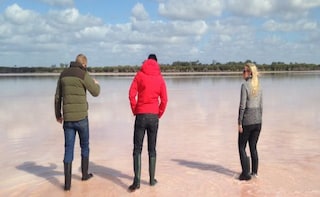Walking on the pink salt lake in the Wimmera. Photograph: Hilary McNevin/The Guardian
Advertisement
Advertisement
Advertisement
For the latest food news, health tips and recipes, like us on Facebook or follow us on Twitter and YouTube.
Advertisement
